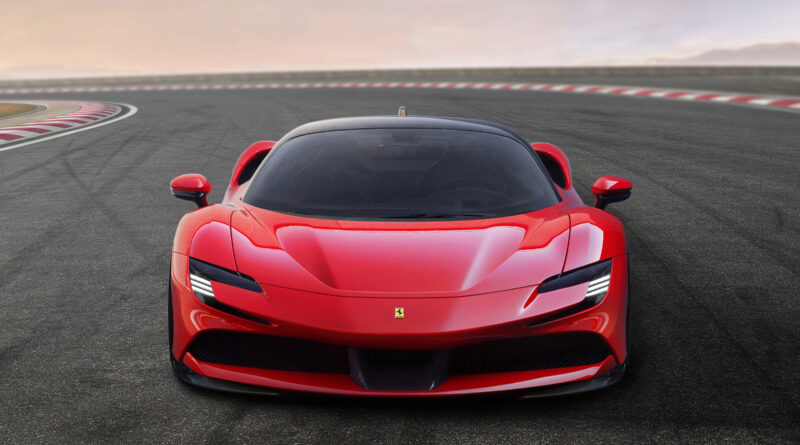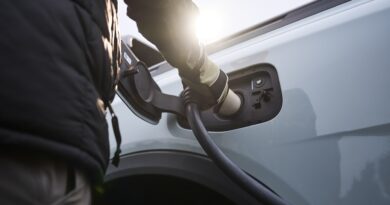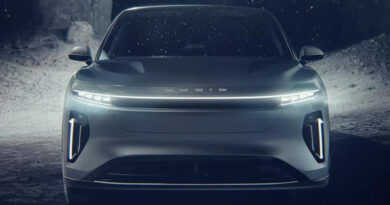Secrets of the electrified Ferrari SF90 Stradale
The inside running on how Ferrari has taken a different approach to electrification.
The Ferrari SF90 Stradale is a plug-in hybrid unlike any other. Engineered primarily for extreme speed, yet also capable of electric-only driving, the latest supercar from Maranello is both complex and innovative.
It sets new highs for a road-legal Ferrari. First ever with 1000 horsepower (though they’re the slightly smaller European or so-called ‘metric’ horses). Fastest ever around the company’s famed Fiorano test track. Quickest ever 0-100km/h and 0-200km/h.
And the SF90 Stradale does all of this with a V8 in its engine compartment, instead of the V12s used in previous top models from Maranello. So it’s clear that electric power makes a major contribution to its stellar speed and performance.
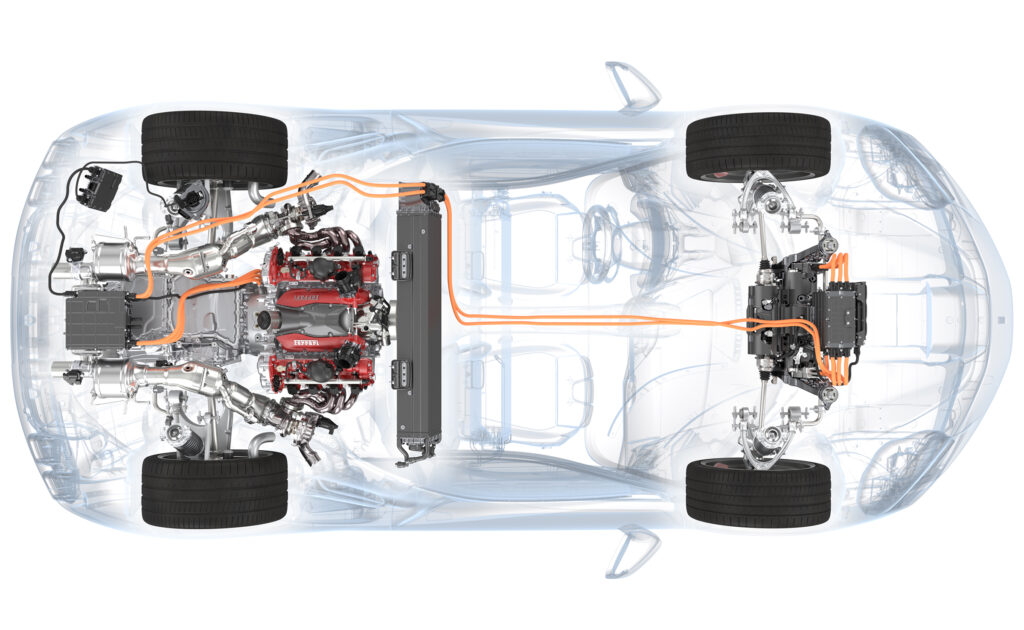
At the same time, the SF90 Stradale is the first ever Ferrari capable of purely electric driving. Using battery power alone, it can drive up to 25km. Not far, but still far enough to be useful.
Here’s how it all works…
Battery pack
Mounted crossways behind the SF90 Stradale’s two seats, the 72kg high-voltage battery is at the heart of the car’s plug-in hybrid system. Containing 84 cells divided into 14 modules, the 350-volt lithium-ion battery pack has a usable energy capacity of only 6.5kW/h, which explains the Ferrari’s relatively short electric driving range.
But the pack’s maximum discharge power is a hefty 180kW. Its maximum charge power, delivered by regenerative braking, is lower, at 140kW.
Charging the battery instead via the Type 2 socket beneath a flap adjacent to the engine compartment cover, power is restricted to just 3.5kW. This limit is baked into the specification of the car’s on-board charger which, converts electrical power from an AC wallbox to DC for storage in the battery pack.
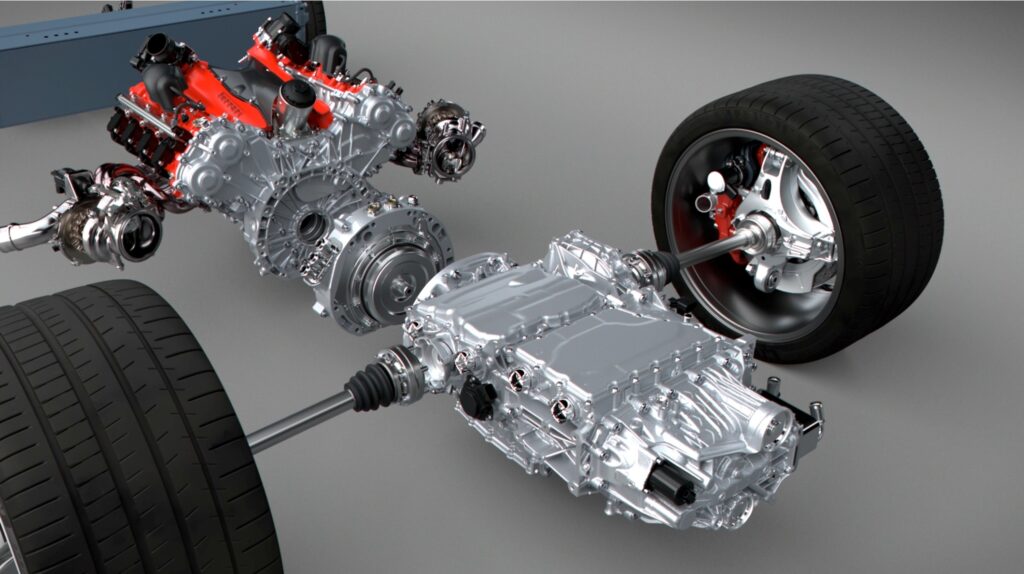
The SF90 Stradale has three electric motors. One is mounted between the engine and transmission, while the other two are mounted in the front axle.
This design is more complex than the average plug-in hybrid, but there are good reasons Ferrari’s engineers chose to do it this way. Their main objective was to make a faster, more agile Ferrari…
Front electric motors
With two front motors, each connected to one of the front wheels through a set of reduction gears and a clutch, the SF90 Stradale is an on-demand all-wheel-drive. It’s the first mid-engined Ferrari sports car ever to be equipped with AWD, a proven acceleration improver, especially from a standing start.
The front motors are the sole power providers when the driver selects the car’s purely electric eDrive mode, so the SF90 Stradale is also a part-time front-drive Ferrari. And that’s another first for the company.
Technically speaking, the SF90 Stradale is an axle-split plug-in hybrid. The BMW i8 is another example of this type, but the BMW has only a single front motor. Two independently controllable front motors, Ferrari’s choice, enables torque vectoring.

When the SF90 Stradale is cornering near the limit of grip, its torque vectoring system can keep the arc tidy by adding corrective electric drive to whichever front wheel needs it.
The final role of the front motors is reversing. The Ferrari’s all-new eight-speed double-clutch transmission doesn’t include a physical reverse gear. Instead, the car relies on some simple electronics to drive the front motors in the opposite-to-normal direction.
At speeds above 210km/h, where they have nothing more to offer, the front motors are automatically disengaged.

Compact and light – only 12kg apiece, according to Ferrari – the front motors are fairly conventional in design. These three-phase, synchronous, permanent magnet machines have the usual cylindrical shape of a radial flux electric motor, can spin to 25,000rpm, and are made by big-time Italian component manufacturer Magnetti Marelli.
The peak power and torque outputs of each front motor is 99kW and 85Nm, numbers easily exceeded by the SF90 Stradale’s third electric motor.
Rear electric motor
The 150kW and 266Nm peak power and torque outputs of the motor squeezed between the car’s engine and transmission are not its most interesting points.
This motor, Ferrari engineers believe, is the first time an axial flux design has been used in a production car. Made in the UK by a small company called Yasa, this type of motor has a couple of important advantages.

At just 72mm thick, this three-phase, synchronous, permanent magnet machine doesn’t add a great deal to the overall length of the SF90 Stradale’s powertrain. And the larger diameter of the rotor in an axial flux motor means stronger torque than a radial flux design of similar size.
As well as adding a hefty boost to the high-rev output of the Ferrari’s 574kW twin-turbo 4.0-litre V8, the rear motor is also programmed to eliminate any hint of turbo lag at low revs. ‘Torque-filling” is the term the engineers use.
Because it’s bolted to the engine’s crank, the Yasa motor cannot propel the SF90 Stradale electrically. There would need to be a clutch between engine flywheel and motor rotor to enable this to happen.
But in a case where the driver wants to reverse and the battery pack is flat, the rear motor comes to the rescue. Like all electric motors, it can also function as a generator. Firing up the engine spins the machinery and electricity is generated to power the front motors … and the Ferrari can drive backwards.
The numbers don’t add up!
Those paying close attention may have noticed the peak power outputs of the SF90 Stradale’s three motors total 348kW, but the battery can only punch out a maximum of 180kW. What’s going on?
In fact, the battery can’t even deliver 180kW. Electrical losses, in components like the inverters that convert battery DC to the three-phase AC the motors need, reduces maximum electric boost to 162kW.
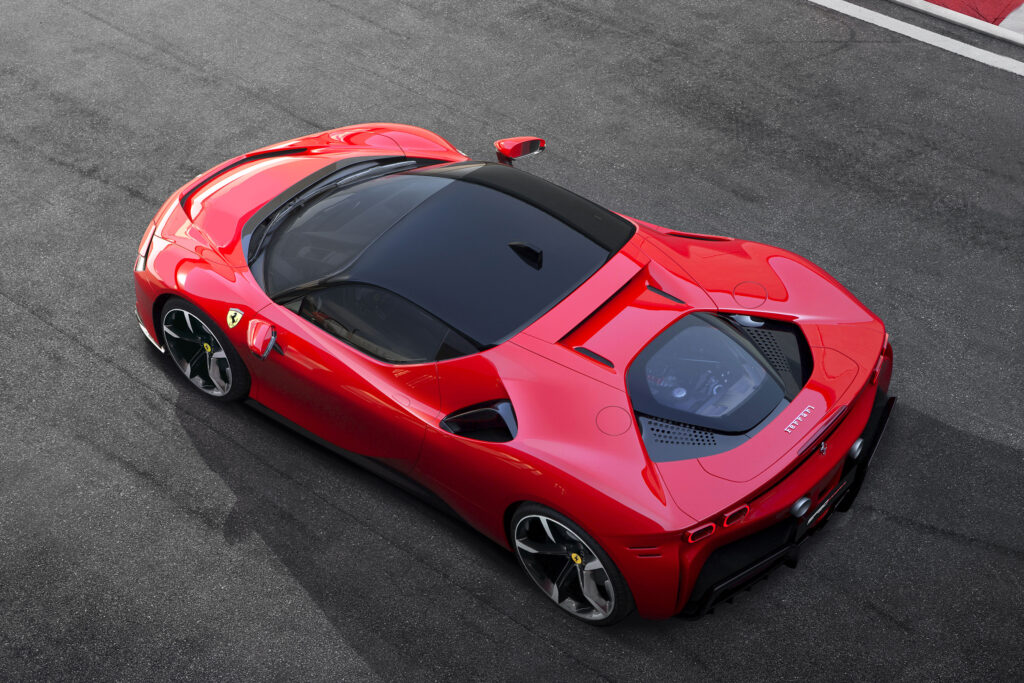
Ferrari’s engineers aren’t idiots. The system they have created is both flexible and very effective. It is able to direct significant power and torque in three directions; to the rear axle or to the front wheels, either together or singly.
At high speed the rear motor can add a properly hefty kick. When launching, the front motors together add an even heftier hit. And while cornering, each of the front motors can deliver meaningful curve-corrective torque.
With less powerful motors, the SF90 Stradale simply wouldn’t be the great Ferrari it is.

